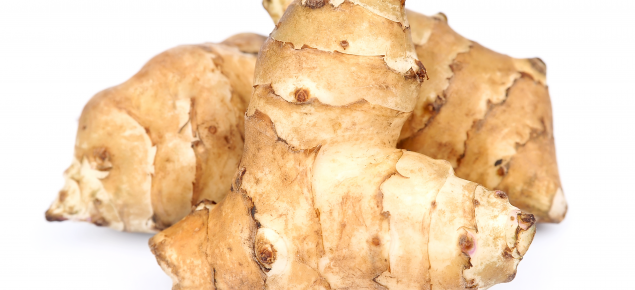Introduction
The Jerusalem artichoke (Helianthus tuberosus) belongs to the large Compositae family which also includes lettuces, sunflowers and globe artichokes. It is a native of North America.
The plant grows to a height of 2 to 3m and 0.6m wide. It resembles a sunflower, but produces a large number of edible knobbly tubers, which resemble ginger. The tubers are smaller, sweeter, crisper and nuttier than potatoes.
The Jerusalem artichoke should not be confused with globe artichoke, which is grown for its edible immature flowers.
Climate and soils
The Jerusalem artichoke is a spring and summer growing plant suited to southern Western Australia. Crops planted between September and November usually give the best yield and harvesting usually takes place between March and May.
Frosts cause severe damage to young plants which require around 140 frost-free days to produce good crops. When plants have died down, frosts may improve the flavour of mature tubers in the ground.
Loams or well fertilised slightly acid to neutral sandy soils, are preferred.
Management
White, red or purple-skinned varieties are available, with mainly unnamed white-skinned and white-fleshed varieties grown in Western Australia.
Jerusalem artichokes are propagated from tubers. Select plump tubers weighing about 70g and cut them up into setts. Each sett should have two to three eyes. Plant the setts 10cm deep and 30cm apart in ridges 75 to 100cm apart. The plants are hardy, and once established need little attention.
They are normally grown in full sun but will yield satisfactorily in more shaded locations than most other vegetables.

